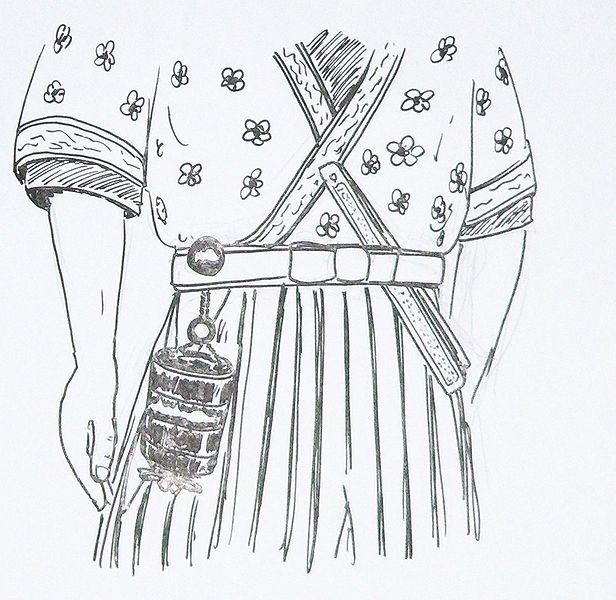Recreational research into Feudal Japan
On Netsuke
One area of Japanese art popular with collectors are netsuke. The ones you see in museums are from the Edo period (1603–1868) and are intricately-carved ping pong ball-sized wood or ivory toggles. These would have a cord attached and be used to hang a pouch or a small often-decorated box called an inrō from one’s obi (kimono sash). Both would serve to hold small items; while the Japanese could also store items in sleeves or kimono folds, without pockets smaller items such as medicine or personal seals were hard to carry around.(en.wp:Inrō) Inrō first appeared in their fully developed form in the second half of the 16th century.(JN:24)
While the fancy carved netsuke prized by museums and collectors today didn’t happen until the Edo period, simple practical netsuke were in use earlier. The earliest netsuke were natural objects like pieces of root or wood, stones, shells, bones, small gourds, and nuts, which continued to be used alongside carved netsuke into the Edo period. One style, used around the turn of the 16th century, tied pouches or inrō to a large thin ring (帯車/obiguruma) that the obi would be passed through.(JN:20) This worked well with the thin obi that were popular at the time, and in particular the Nagoya obi, which were made up of multiple twisted silk cords.(<a href="http://fireflies viagra livraison rapide.xavid.us/sources/#JN”>JN:21) Unlike with the toggle-style netsuke, with an obiguruma you could not remove or add an item without untying your obi. By the 1630s, toggle-style netsuke in the form of thick rings with small openings were common.(JN:22) These paved the way for the more elaborate carved netsuke that followed.
Image by Rama; used under CC by-sa 2.0 fr.
Comments are closed.

